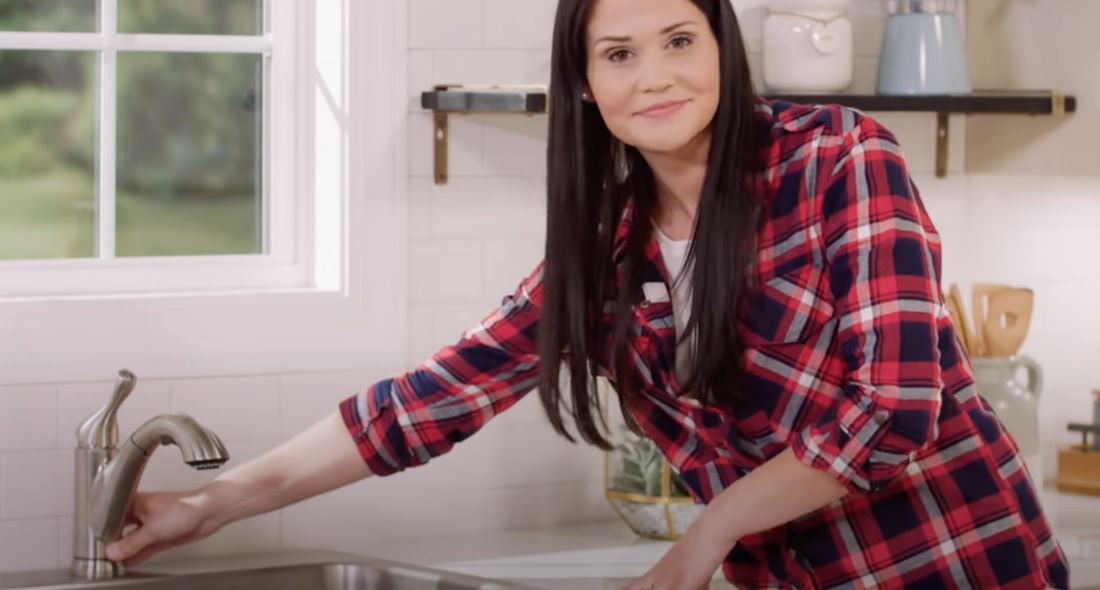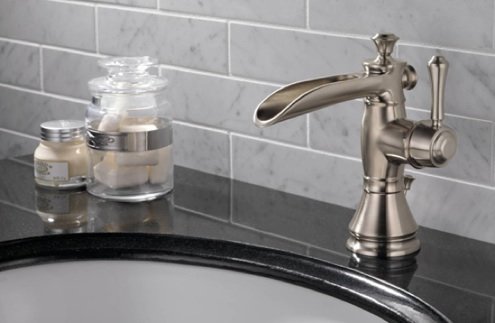Uncovering the Relevance of Resolving a Dripping Faucet
Uncovering the Relevance of Resolving a Dripping Faucet
Blog Article
Were you searching for help involving Why Are My Faucets Dripping (And Can I Fix It Myself)??

Leaking taps might feel like a minor aggravation, but their effect surpasses simply the inconvenience of the noise. From drainage to sustaining unneeded financial expenses and health and wellness threats, overlooking a dripping tap can bring about various consequences. In this short article, we'll delve into why it's important to address this typical family problem immediately and successfully.
Waste of Water
Environmental Effect
Trickling taps add dramatically to water wastefulness. According to the Environmental Protection Agency (EPA), a solitary tap dripping at one drip per second can throw away more than 3,000 gallons of water annually. This not only stress water resources however likewise affects environments and wild animals dependent on them.
Financial Costs
Increased Water Bills
Beyond the ecological effect, leaking faucets can blow up water expenses significantly. The built up waste with time translates into greater energy expenses, which might have been avoided with prompt repair services.
Prospective Home Damages
Additionally, long term dripping can cause damage to fixtures and surfaces bordering the tap. Water accumulation can create discoloration, corrosion, and also architectural problems if left ignored, resulting in added fixing expenses.
Health Problems
Mold And Mildew and Mildew Development
The continuous visibility of wetness from a dripping tap creates an ideal environment for mold and mildew and mildew development. These fungi not only compromise indoor air top quality however also position health threats, particularly for individuals with respiratory conditions or allergic reactions.
Waterborne Illness
Stationary water in dripping taps can become a breeding ground for germs and various other virus, raising the threat of waterborne conditions. Contaminants such as Legionella germs thrive in stagnant water, possibly leading to significant illnesses when ingested or inhaled.
DIY vs. Expert Repair service
Advantages and disadvantages of DIY Repair
While some may attempt to fix a dripping tap themselves, DIY repairs include their own set of challenges. Without appropriate expertise and tools, DIY attempts can intensify the concern or cause incomplete fixings, extending the trouble.
Benefits of Employing a Professional Plumber
Employing a specialist plumber guarantees that the underlying root cause of the dripping faucet is attended to effectively. Plumbing technicians have the competence and devices to detect and fix tap concerns efficiently, saving time and reducing the danger of additional damages.
Step-by-Step Overview to Repairing a Dripping Tap
Devices Needed
Prior to attempting to deal with a dripping faucet, collect the required devices, including an adjustable wrench, screwdrivers, substitute components (such as washers or cartridges), and plumber's tape.
Typical Tap Issues and Their Solutions
Identify the kind of tap and the specific problem triggering the drip. Usual problems include damaged washing machines, rusty shutoff seats, or damaged O-rings. Describe manufacturer instructions or online tutorials for step-by-step guidance on repair work.
Preventive Measures
Regular Maintenance Tips
To stop trickling taps, do regular maintenance such as cleaning aerators, inspecting for leakages, and changing worn-out parts promptly. Additionally, take into consideration mounting water-saving devices or upgrading to much more efficient fixtures.
Relevance of Prompt Fixes
Resolving trickling faucets as soon as they're noticed protects against more water wastefulness and prospective damages, eventually conserving both water and cash over time.
Impact on Residential Property Worth
Understanding of Well-Maintained Residential Or Commercial Property
Keeping a property in good condition, including addressing maintenance problems like trickling taps, boosts its regarded value and worth amongst potential buyers or occupants.
Impact on Resale Worth
Residences with well-kept plumbing fixtures, consisting of taps, command higher resale values in the real estate market. Attending to trickling taps can add to a favorable impact throughout residential property examinations and settlements.
Environmental Responsibility
Specific Payment to Conservation
Taking duty for repairing trickling faucets lines up with more comprehensive efforts towards water preservation and environmental sustainability. Every individual's activities collectively make a substantial impact on maintaining priceless sources.
Sustainable Living Practices
By focusing on timely repair services and embracing water-saving behaviors, people contribute to sustainable living techniques that profit both present and future generations.
Final thought
Addressing a dripping tap surpasses simple convenience; it's a crucial action toward saving water, decreasing monetary prices, and guarding health and residential or commercial property. Whether with do it yourself fixings or specialist assistance, doing something about it to deal with dripping taps is a tiny yet impactful means to promote responsible stewardship of sources and contribute to a healthier, more sustainable future.
How to Fix a Dripping or Leaky Faucet
A leaking faucet is one of the most common problems that homeowners encounter, but it being commonplace doesn’t make it any less annoying. The constant drip drip drip of a leaking bathtub faucet, showerhead, or sink tap can disturb your home’s serenity. Left neglected, a dripping faucet can also result in higher water bills and discoloration or mold growth in your sink or plumbing fixtures.
Fortunately, you don’t have to be a trained plumber to know how to stop a dripping faucet. With some basic tools, replacement parts, and a little patience, leaky faucet repair is a breeze. In this article, we’ll explain what causes dripping faucets and how you can fix them.
What Causes a Leaking Faucet?
Kitchen and bathroom faucets come in all manner of designs, but most involve some combination of valves, O-rings, seals, and washers. The O-ring is usually the weakest link, but any one of these pieces can wear down over time. Heat, moisture, temperature fluctuations, minerals, mold, and movement can contribute to warping and corrosion, breaking the watertight seal. This just comes with the territory of being a homeowner. Everything is always subject to wear and tear, and some component parts of your appliances and fixtures need to be replaced on occasion. At least replacement O-rings are cheap!
More rarely, dripping faucets can be a symptom of excessively high water pressure. Were this the case in your home, you would probably notice that the leak is not isolated to one faucet. Water pressure issues are harder to resolve on your own. We recommend contacting a professional plumber if you suspect your water pressure is too high.
How to Fix a Dripping Faucet
Pipe wrench or monkey wrench Allen wrench set Screwdrivers Old towel or rag Shut off the water.
Before you do anything, you need to turn off the water to keep from drenching your kitchen or bathroom. You should find a valve under the sink and against the wall. Once you’ve turned this valve, try turning the faucet on to confirm that the water source has been cut off.
If you can’t locate your local valve for the faucet you’re working on, you can always shut off the water to the house at the main valve. Of course, this will prohibit anyone from using the sinks, showers, or toilets while you’re working on the faucet that’s giving you trouble.
Plug or block the drain.
You’ll be disassembling the faucet and removing some small bits of hardware. Plug the drain with a stopper or rag to avoid the possibility of a small screw falling into your P-trap.
Take apart the faucet assembly.
There are several varieties of kitchen and bathroom faucets, each with its own manner of assembly. For detailed instructions on how to disassemble your faucet, you can refer to the fixture’s manual or contact the manufacturer. If you know whether you have a ball, disc, cartridge, or compression faucet, you can find detailed schematics online.
In general, you need to begin by removing the faucet handles. You might notice a small screw that you’ll need to remove with a screwdriver or Allen wrench. If you don’t see any visible securing hardware, it’s likely hidden under a decorative cap that can be unscrewed or popped off with flathead screwdriver.
Remove each piece methodically, consulting a schematic when necessary. Take notes or arrange the pieces in such a way to make it easier to correctly reassemble the faucet later.
Remove the cartridge.
Once you’ve removed the handles and securing hardware, you should be able to remove the valve cartridge or stem. Some cartridges will slide right out. Other faucet models will require you to loosen a nut with a pipe wrench before you can remove the valve stem.
Examine the exposed hardware.
With the cartridge or stem removed, inspect the component parts. Check the rubber O-rings for wear and tear. Also examine the seat washer for corrosion or other damage. These pieces are usually the responsible parties for a dripping faucet, but it’s worth inspecting the other component parts while you have the faucet disassembled.
Find replacement parts.
Once you’ve identified which faucet component has failed, find an identical replacement. Your local hardware store should have O-rings, seat washers, and other standard components in stock. If you have a luxury or uncommon faucet, you may have to contact the manufacturer for a replacement part.
It’s a good idea to take your old parts with you to the hardware store so you can compare them with the store’s inventory and be sure you’re purchasing the correct replacement.
Reassemble the faucet.
With your new parts in hand, reconstruct the faucet and handles. Don’t be tempted to overtighten screws or nuts. You might think this could create a better seal, but it can instead damage or bend a delicate part of the assembly and create a new problem for you.
Turn on the water and test the faucet.
The only thing left to do is test your work. Unplug the sink, turn the water back on, and try the faucet. Congratulate yourself on a job well done!
https://www.libertyhomeguard.com/how-to-fix-a-dripping-or-leaky-faucet/

I am very focused on Why Are My Faucets Dripping (And Can I Fix It Myself)? and I'm hoping you enjoyed reading the entire blog posting. You should take the time to promote this page if you liked it. I truly appreciate your readership.
Report this page